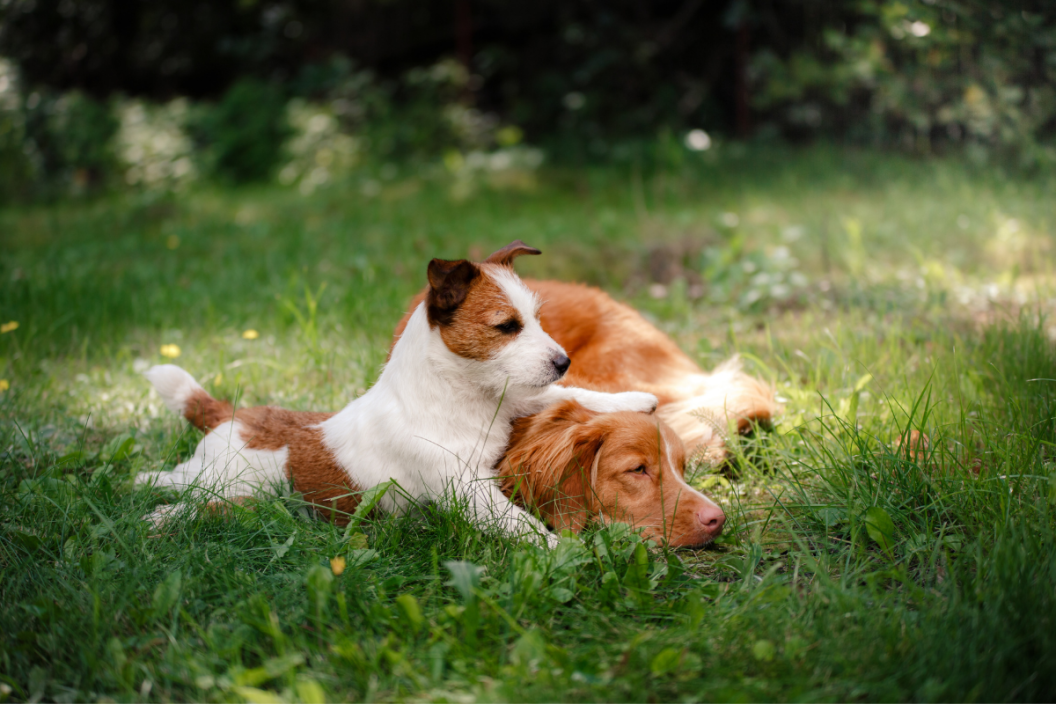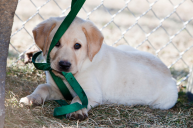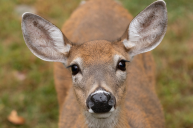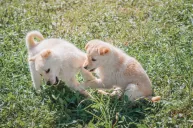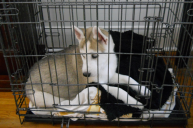There are few things in life better than bringing home a new puppy. In the days leading up to your furry family member's arrival, everyone in your house will be filled with anticipation and excitement. Well, maybe not everyone. While the humans have probably been talking about getting a puppy for weeks, the dog you already have may not know what's going on.
Easing your dog into this unfamiliar situation is just as important as the steps you'll take to make it a smooth transition for your new puppy. After you've purchased everything on your puppy checklist, puppy-proofed your home, and decided on the best puppy food, it's time figure out how to introduce a new puppy to your dog. Depending on your adult dog's age, breed, and temperament, this could be a walk in the park or a bit of a challenge.
Puppies have a lot of energy, which can be overwhelming for an older dog. A young pup thinks it's playtime all the time and your dog may not feel the same way. Plus, if you've had your resident dog for many years as the only pet, they may be resistant to sharing the spotlight at first. Keeping both dogs safe and happy starts with creating a plan for how to introduce your new puppy to your dog at home. You'll need to prepare for the first meeting, learn how to introduce the dogs, and understand what not to do while they get to know each other. Dog behavior can be unpredictable, so it takes a little time and patience to make sure they'll be furry BFFs.
How to Prepare for a New Puppy

RELATED: 9 Types of Dog Training, From Clickers to E-Collars
First, dog owners need to do a little prep at home before the new puppy arrives. The puppy should have its own space, separate from where the existing dog spends time, where you'll keep the puppy's crate, indoor toys, and water and food bowls. Even if your resident dog has never showed possessive or aggressive behavior, it's best to keep their personal items separate. You can use a tall dog gate to divide the two areas, in case their first meeting doesn't not go well. Don't worry—this doesn't have to be permanent! It's just a precaution to keep both your puppy and dog safe until they learn to live happily together.
How to Introduce a New Puppy to Your Dog
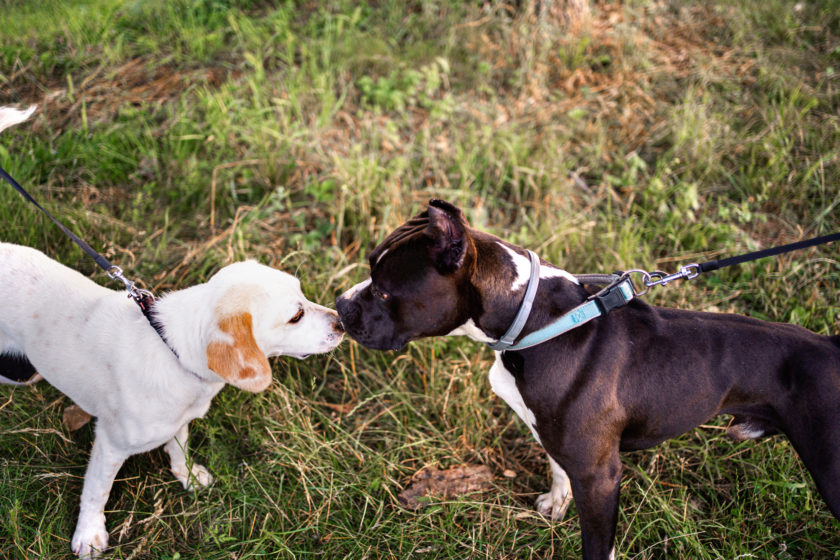
The first time the two dogs meet should be in a neutral location. Your resident dog may feel possessive or territorial if they meet inside of the house or the backyard, and could treat the puppy like an intruder. Introducing them in neutral territory, like a park, allows your adult dog to relax and enjoy meeting their new family member. You could even take your older dog with you to pick up the pup so the pair can ride home together in the car. (But only do this if you can keep them in separate crates during the trip.)
Once you've settled on a neutral place for the dogs to officially meet, bring them there separately with the help of another human. You should keep them both on slack leashes and allow them to greet each other calmly. They may sniff, circle around each other, and even try to play. Or, they could ignore each other entirely! The key here is not to force any certain type of interaction.
When it's time to go home, walk both dogs into the house together on leashes and at the same time. Watch your older dog's body language closely, because they may begin to display territorial behavior as the pair enters the home. Until your adult dog is completely comfortable with the young puppy, you should supervise their interactions around the clock and pay attention to their behavior. Crate training will be extremely helpful for both dogs during these first few weeks. The crate gives your new pup a safe spot to take a nap and relax as they adjust to your home, while your older dog will have a place to retreat to if they decide the puppy is too much for them to handle.
It'a also important to keep up your resident's dog usual routine while establishing a new routine for the puppy. You can take them on walks together, put them to bed at the same time, and allow them to play—but remember to take things slow.
Living With a New Puppy and Older Dog
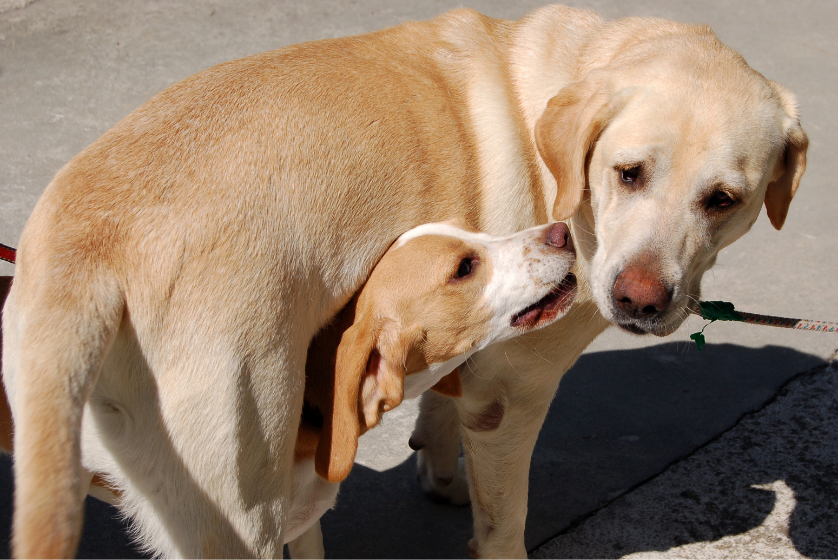
It may take a few weeks or months before the two dogs get along—and even then, they may not love each other. Be patient and continue to reward positive behaviors as they interact. If you notice anxiety or tension between the two dogs, don't hesitate to separate them. If this negative behavior continues, you may need to reach out to an animal behaviorist or dog trainer for help with training and tips.
There a few things you should never allow your new puppy or your dog to do while they get to know each other. Make sure the puppy isn't overwhelming your adult dog by jumping or chewing on them too much, but also don't allow the dog to bully the puppy. If they're fighting, place either the puppy or the dog (or both!) in their crate until they calm down. Taking breaks gives both dogs a chance to reset. They should also never, ever share a crate or be left alone together. And, as much as you want them to get along, don't force the two dogs to interact. As your puppy gets more training and your dog adjusts to its presence, their relationship will continue to improve.
The process of getting a new puppy with an older dog can be difficult, but it's worth it. Remember to be patient and work on creating a positive and neutral environment for both dogs!
How long did it take your older dog to adjust to a puppy? Tell us on our Wide Open Pets Facebook page.
READ MORE: These Homemade Peanut Butter Bones Are Perfect Puppy Snacks
